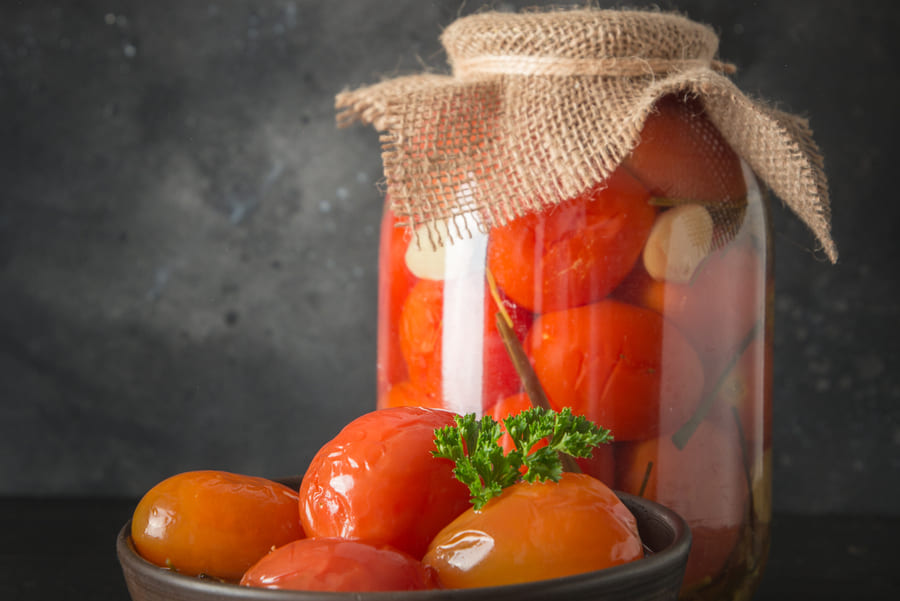Posted On: November 03, 2025
Posted By: KSNM DRIP

Tomatoes are among the most popular crops grown in India, yet their short shelf life leads to post-harvest losses. This blog explains ten simple ways to preserve tomatoes effectively, including drying, freezing, and processing. These methods help farmers, traders, and households extend freshness, minimize waste, and improve profitability.
Tomatoes are a major part of Indian agriculture and an essential ingredient in most cuisines. Their vibrant color and nutritional value make them highly desirable, but their high water content causes quick spoilage after harvest. Preserving tomatoes the right way helps reduce waste and maintain steady income for farmers. At KSNM Drip Irrigation, we promote efficient irrigation and post-harvest techniques that help farmers get the most value from every crop.
Sun drying is one of the simplest and oldest preservation methods. Slice ripe tomatoes and place them on trays under direct sunlight. Cover the trays with a thin mesh or cloth to keep away dust and insects. In three to five days, the slices become crisp and ready for storage. Dried tomatoes can later be soaked or used in sauces, curries, and pickles.
Solar dryers provide faster and cleaner results than open sun drying. They protect the tomatoes from dust, moisture, and insects while drying them evenly using controlled heat and airflow. Farmers who use efficient irrigation systems like Rain Hose Fittings can easily combine such technologies with solar drying to make the most of their harvest during surplus seasons.
Freezing is one of the most convenient preservation methods for households and small food businesses. Wash and blanch the tomatoes briefly in hot water, peel the skins, and pack them in freezer-safe containers. Frozen tomatoes retain their natural flavor and color for months, making them suitable for use in soups, sauces, and gravies.
Tomato puree is widely used in homes and restaurants. Boil ripe tomatoes, blend them into a smooth paste, and store the puree in sterilized bottles or jars. Using an efficient irrigation product like Drip Tape 250 (16 mm) ensures uniform water supply during tomato cultivation, resulting in consistent fruit quality for processing into puree.
Canning extends the life of tomatoes for up to a year. Sterilize glass jars, fill them with peeled tomatoes or puree, and seal them tightly. Heat the jars to remove air and prevent bacterial growth. Once cooled, store them in a cool, dark place. Canning is ideal for small processing units and entrepreneurs in the food industry.
Converting tomatoes into sauces or ketchup adds commercial value. Cook chopped tomatoes with salt, sugar, and spices until the mixture thickens. Strain, boil again, and store in clean bottles. This is one of the best ways to reduce waste during peak harvest. It also helps small-scale farmers diversify their income through homemade or branded products.
Tomato powder is an easy-to-store and transport product. Slice tomatoes, dry them completely in a solar or electric dryer, and grind them into fine powder. Keep it in airtight containers to preserve the flavor and color. Farmers using Inline Cylindrical Drip Lateral Tube (16 mm) achieve better fruit quality, which is essential for processing high-grade tomato powder.
Pickling adds a tangy flavor to tomatoes while extending their shelf life. Combine chopped tomatoes with vinegar, salt, and spices. Store in sterilized jars and let them rest for a few days. Pickled tomatoes are a delicious side dish that stays fresh for several months when stored in a cool place.
Semi-dried or roasted tomatoes can be stored in olive oil or saltwater brine. Oil or brine acts as a natural preservative that keeps the tomatoes soft and flavorful. This method is common among small food producers and homemakers who prefer natural storage without artificial preservatives.
Vacuum sealing removes air from the packaging, preventing bacteria and mold formation. This method keeps tomatoes fresh for an extended period and is particularly useful for commercial-scale preservation. It helps maintain both texture and nutrition, ensuring long-term storage without refrigeration.
Use only firm, ripe tomatoes for preservation.
Always clean and sterilize containers before storage.
Label each container with the date of preservation.
Keep stored products away from direct sunlight and moisture.
Tomatoes are one of the most versatile crops, and proper preservation helps reduce waste while ensuring year-round availability. Farmers and food processors can use these ten methods to extend the value of every harvest. With effective cultivation using systems like KSNM Drip Irrigation, and careful post-harvest handling, it is possible to maintain quality and freshness for longer periods. Smart preservation, combined with efficient irrigation, ensures that every tomato grown is fully utilized from farm to table.